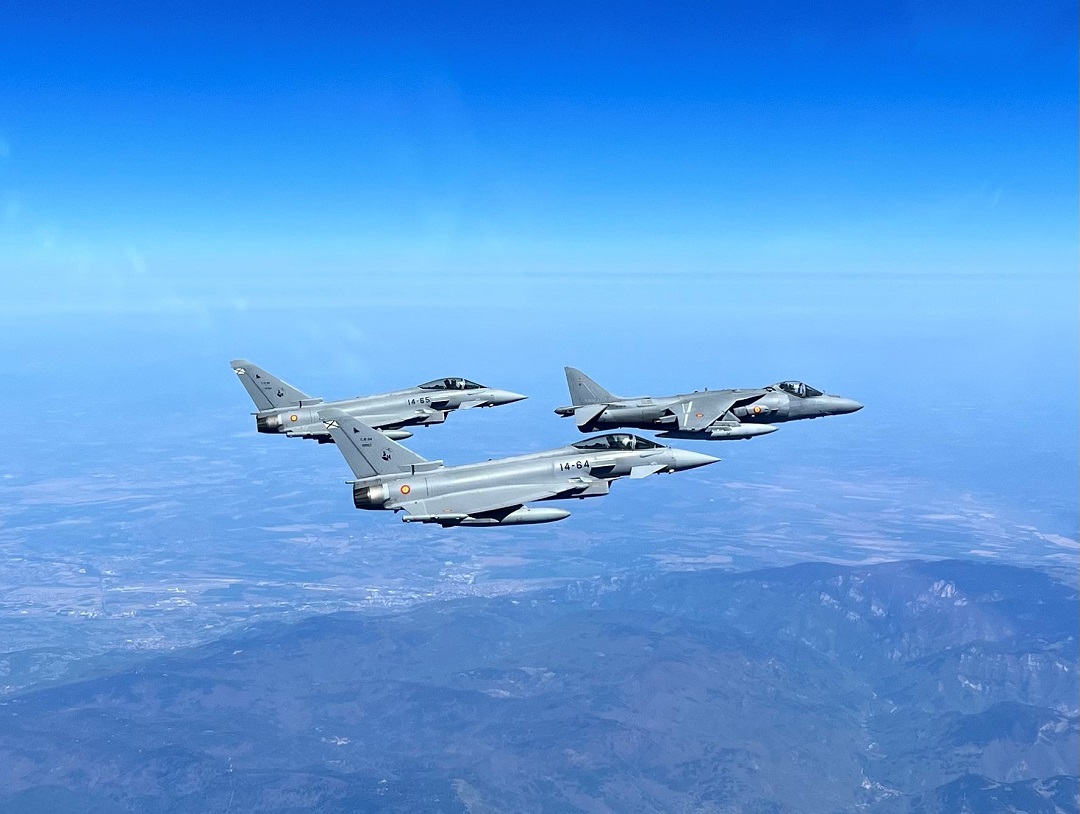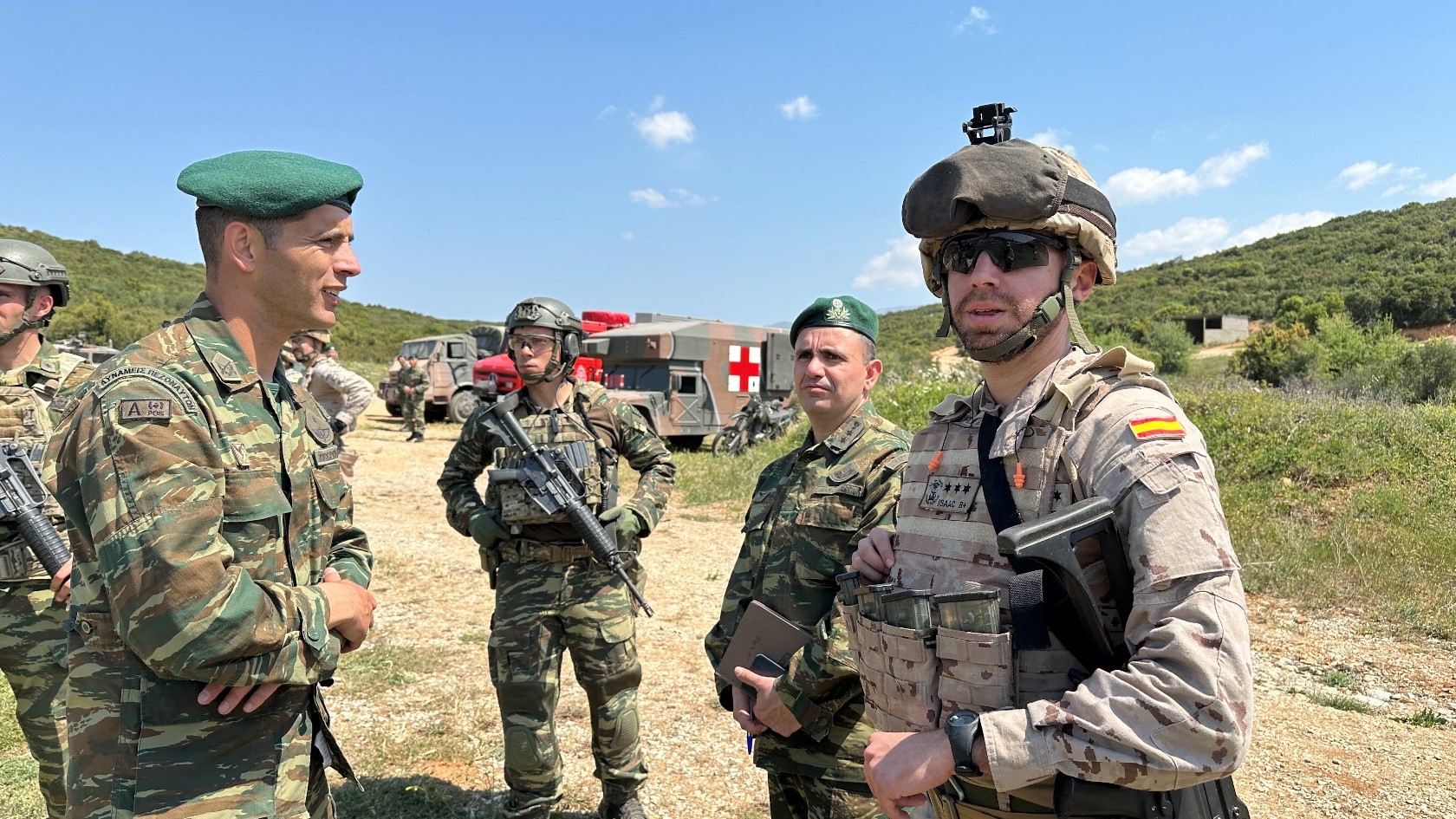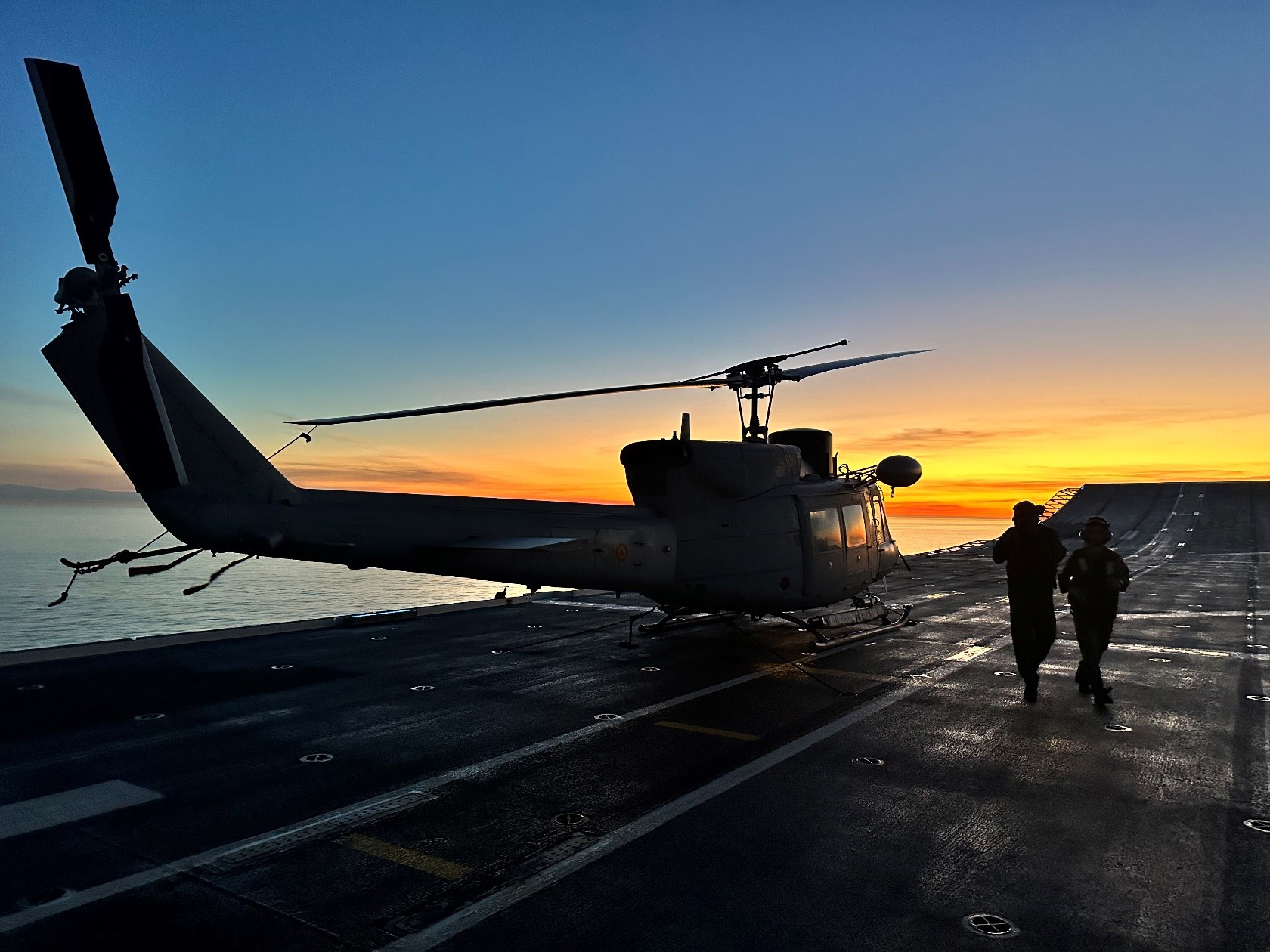
Expeditionary battle group 'Dédalo 24' continues its deployment in support to the Alliance's maritime flank defence.
- During the three-month sailing period, the vessels will transit from Istanbul to Helsinki.
At the beginning of this April, the DÉDALO 24 Expeditionary Battle Group left the Rota Naval Base, starting a deployment of more than three months long. Its main tasks are to support NATO's enhanced surveillance activities established after the invasion of Ukraine and to contribute to maritime security in European waters from the Aegean Sea to the Baltic coasts.
The DÉDALO Group is composed of the aircraft carrier 'Juan Carlos I', the amphibious assault vessel 'Galicia', 'Harrier' aircrafts and helicopters belonging to the Navy's Aircraft Flotilla, a Reinforced Marine Infantry Landing Battalion and the frigates 'Blas de Lezo' and 'Reina Sofía'.
During these first weeks of navigation, the vessels and helicopters have carried out intense surveillance activity in the Mediterranean, in support of NATO's Operation Sea Guardian, in the fight against transnational terrorism.
Bilateral activities have also been carried out with the Armed Forces of Greece and Turkey. These activities, in addition to increasing mutual understanding, help to demonstrate the capability of NATO Navies to plan and execute jointly such complex operations as amphibious and naval aviation operations, the two main vectors of naval power projection onto land that characterise the DÉDALO Expeditionary Battle Group.
On the Turkish side, its new flagship, the 'Anadolu' - twin of the 'Juan Carlos I' -, one of its frigates, transport and attack helicopters and a marine infantry force took part. During their subsequent harbour visits, the members of the DÉDALO Group were warmly received by the Turkish population and authorities, who have not forgotten the support given to this country during the earthquakes of February 2023, when the Group provided humanitarian aid and collaborated in the rescue of two survivors from the rubble.
The activity with the Greek Armed Forces has been equally demanding, carrying out amphibious operations in the Peloponnese and the islands of Skyros and Crete, and several air defence exercises, during which the Harrier planes of the 'Juan Carlos I' flew with Greek F-16s and F-4s. For seven days, a Greek frigate remained integrated in the DÉDALO Group.
Since departing from Spain, the activity of the AB-212 helicopters and Harriers has been very intense. Among the missions carried out, those involving live fire, both day and night, over surface targets for the helicopters and the Harriers over the polygon on the Greek island of Karavia are particularly noteworthy.
Also noteworthy was the joint surveillance activity conducted in Bulgarian airspace by Harriers with Eurofigther aircraft from the 14th Wing of the Air and Space Force, belonging to the 'Paznic' Detachment, deployed in Romania. This was an example of how aircraft carriers can contribute to deterrence by reinforcing security in the airspace of the Alliance's eastern border, as well as an example of Spain's commitment to deterrence and the defence of Europe.
Over the upcoming weeks, the Group will participate in NATO-commanded ‘enhanced peacetime surveillance activities’ 'Neptune Strike'. In this context, Harrier aircraft will fly alongside allies over the skies of Slovakia, North Macedonia, Bulgaria, Romania, Italy, Montenegro and Albania and in addition, will carry out missions in support of contingents deployed in Eastern European countries, including the Spanish troops in Slovakia.
Along with the 'Juan Carlos I', the French aircraft carrier 'Charles de Gaulle' and the Italian 'Cavour' are scheduled to participate. The 'Anadolu', the Turkish twin of the 'Juan Carlos I', will also take part.
Simultaneously, the Group will participate in 'Mare Aperto', an amphibious exercise organised by Italy, along with 6,000 personnel from allied countries.
At the end of May, after a brief logistical stopover at the Rota Naval Base, the Atlantic phase of the "'DÉDALO 24' deployment will begin. The Group will head to Gijón, where it will take part in the Armed Forces Day activities. Afterwards, it will head to the Baltic Sea to take part in the multinational exercise 'BALTOPS 24', which will end with a partnership with the Finnish Navy in Helsinki before returning to Spain.
Fotos





